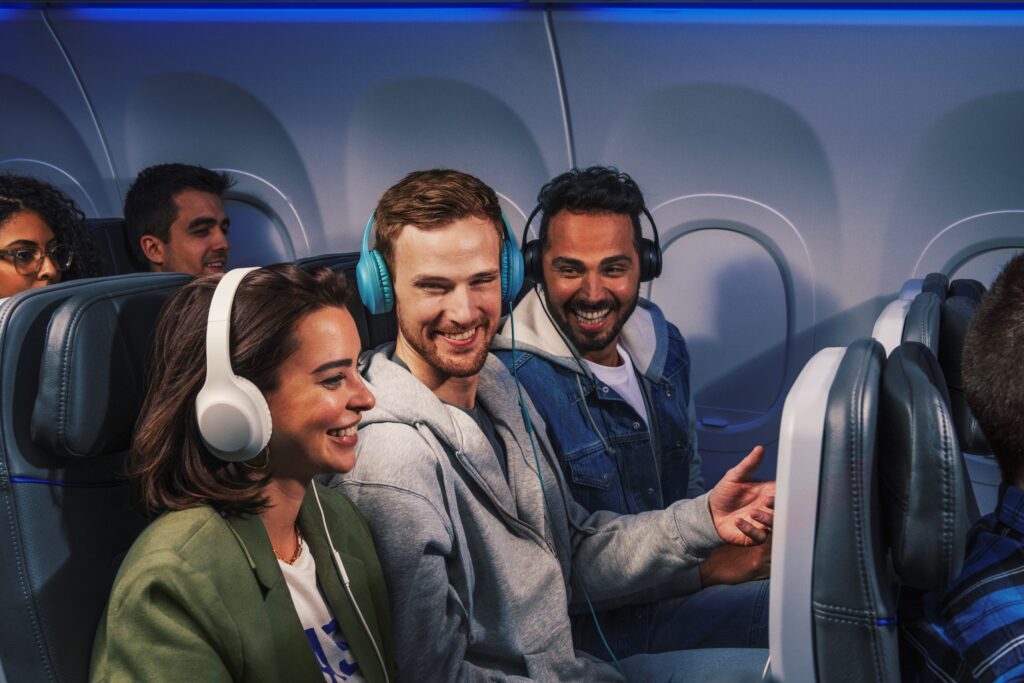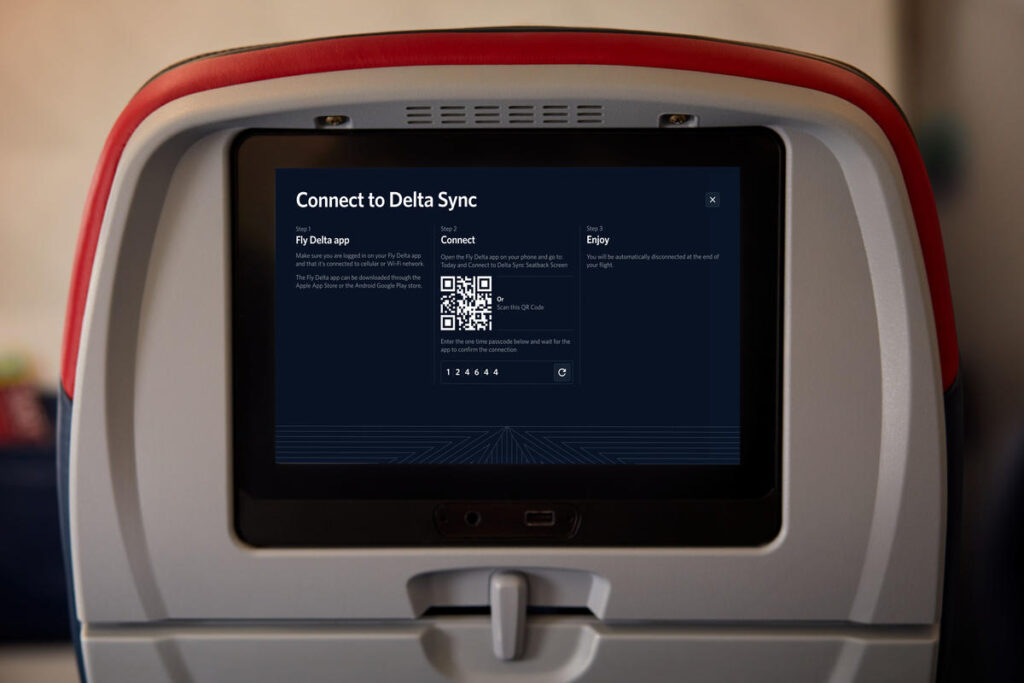Airlines Soar with Embedded IFE: The Key to Profit and Passenger Satisfaction
Share

In a fiercely competitive industry, airlines investing in embedded in-flight entertainment (IFE) systems dominate, capturing the lion’s share of profits and achieving top customer satisfaction and Net Promoter Scores. Airlines like Aeromexico, Air Canada, Delta, Emirates, JetBlue, Qatar, Singapore, United, and many others prioritize passenger experience using advanced IFE systems, leading to increased revenues and customer loyalty.
United Airlines’ shift regarding seatback IFE in the past few years exemplifies this strategy’s effectiveness. As United CEO Scott Kirby remarked last week, “[In 2016,] I was president of American, and we were putting seatback entertainment systems on every one of our airplanes. Everyone in American thought that was a stupid idea. The day after I left, they reversed it and they spent money to take it off the airplanes because it would reduce weight and save fuel burn. We put it on at United. We’re putting it on every single airplane.”
The Forbes article featured another quote where Kirby further emphasized the impact of IFE: “[On my last United flight,] as I always do when I fly on one, I walk from back to front. Two thirds of the customers on the airplane are watching movies.“ He said that when customers are pleased with the movies, they rank United higher in other areas, including flight attendants, gate agents and even their TSA experience. The carrier also posted strong financial results for the first quarter of 2024 compared to the same time last year.
This shows how cutting-edge IFE systems not only help to retain customers but also attract new ones, significantly contributing to airlines’ bottom lines.
Elevating Passenger Expectations
Passengers now demand more than just a seat; they seek a comprehensive in-flight experience, and airlines recognizing this shift reap substantial benefits, so United’s recent success can no doubt be somewhat attributed to its investment in state-of-the-art IFE systems, offering passengers a wide range of entertainment options, high-speed internet and personalized content.
For the most part, the US airline industry has embraced this strategy wholeheartedly. Delta Air Lines’ Director of Onboard Product and Brand Experience Ekrem Dimbiloglu emphasized, “We know how much our customers value entertainment on board. That’s why we have installed seat-back screens in over 700 aircraft and continue to forge partnerships with entertainment giants . . . to bring more diversity and variety to the entertainment options we offer in flight.”

In its renaissance under newly appointed CEO Joanna Geraghty, JetBlue has also showcased its commitment to IFE. “JetBlue has always been an innovator as the first to have seatback screens . . . [by] launching Blueprint by JetBlue, we are doubling down on our commitment to help customers create an in-flight experience tailored to their needs and preferences, making their flight as comfortable as their own living rooms,” JetBlue’s Head of Marketing and Customer Support Jayne O’Brien recently stated.
It’s the same for premium carriers in the Middle East. Celebrating over 30 years of IFE leadership, Emirates’ SVP Retail, IFE & Connectivity Patrick Brannelly echoed similar sentiments on the importance of IFE to passenger satisfaction: “When Emirates introduced personal screens on every seatback in 1992, it was considered a massive industry innovation. Other airlines questioned the sense of this huge investment, estimated at about US$15,000 per seat at that time, but we quickly realized that our customers loved being entertained throughout the flight. It made their journeys feel shorter and fostered customer satisfaction and loyalty.”
Transforming Low-Cost Carriers
Interestingly, the trend extends beyond full-service airlines. By the end of this decade, leading low-cost carriers (LCC) and ultra-low-cost carriers (ULCC) will likely incorporate embedded IFE screens nearly as thin and light as seatback plastic.
This technological advancement will enable these carriers to offer enhanced passenger experiences without compromising on cost efficiency. The integration of even more lightweight, durable, and easily swappable IFE systems will allow LCCs and ULCCs to maintain competitive pricing while significantly improving customer satisfaction.
Revolutionizing In-Flight Technology
Thinner, lighter IFE screens revolutionize the airline industry. These innovations reduce aircraft weight, leading to fuel savings while providing passengers with seamless, enjoyable in-flight experiences. The new generation of IFE systems, designed to be more energy-efficient and user-friendly, further enhances their appeal to airlines and passengers alike.
Airlines failing to invest in IFE technology risk falling behind. The clear correlation between IFE investment and financial performance underscores the importance of staying ahead in technological advancements.

Strategic Imperative for Airlines
The evidence proves overwhelming: investing in embedded IFE systems stands as a strategic imperative for airlines aiming to secure a competitive edge. Success stories of airlines like Delta, Emirates and United highlight the significant impact that enhanced passenger experiences have on profitability and customer loyalty. As technology evolves, airlines prioritizing IFE innovation will dominate the industry, with those who do so enjoying sustained growth and a loyal customer base.
Conclusion: Adapting to a New Era
In summary, the airline industry’s future hinges on its ability to adapt and invest in passenger-centric technologies. Embracing advanced IFE systems ensures airlines remain at the forefront of the industry, achieving both financial success and unparalleled customer satisfaction. The stakes have never been higher, and the rewards never more significant. As Ed Bastian points out, “The airline that prioritizes the passenger experience sets itself up for enduring success.”


